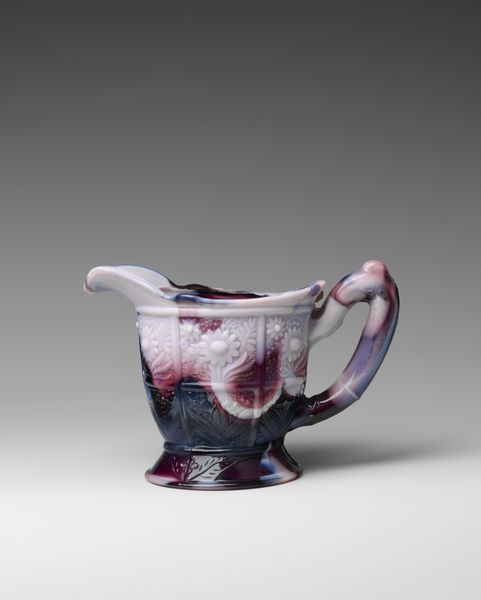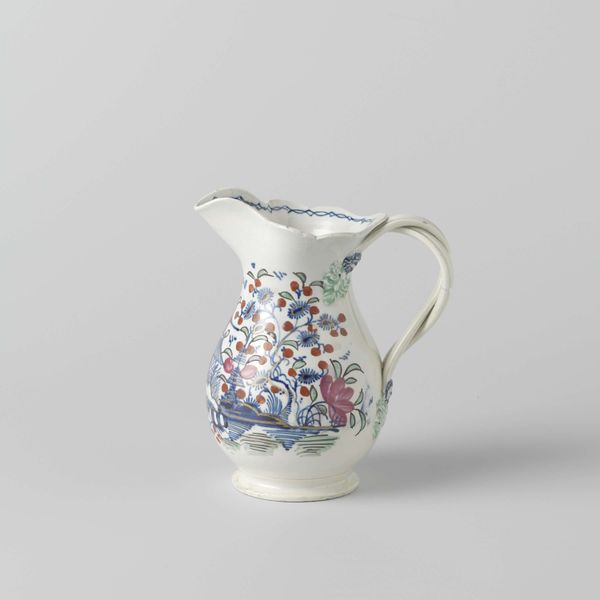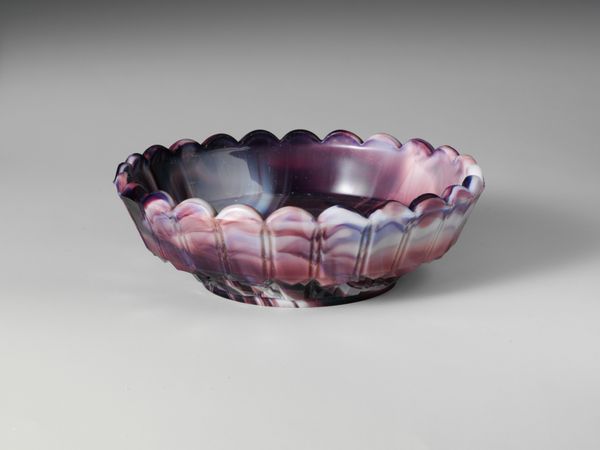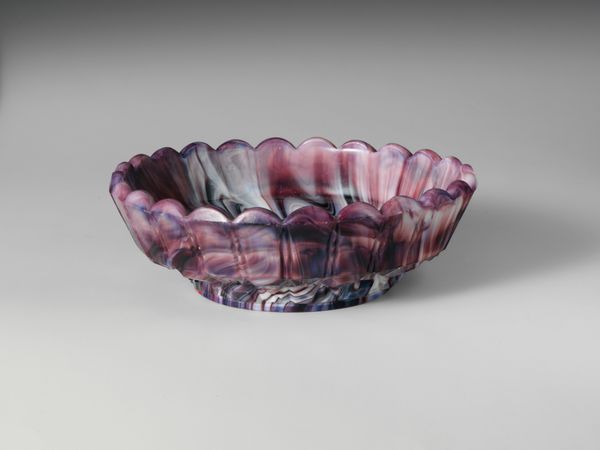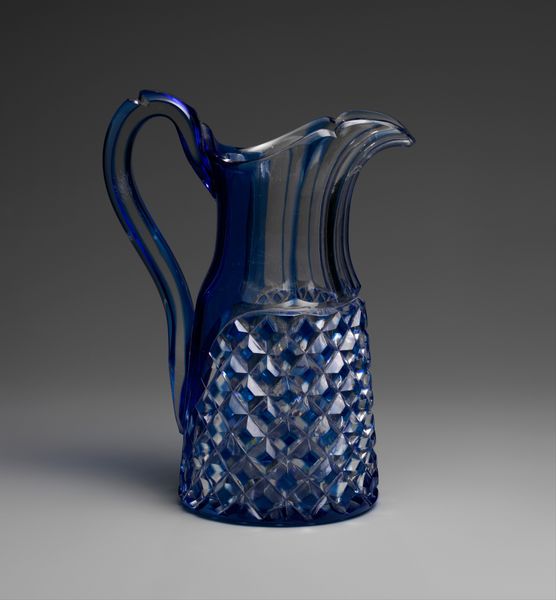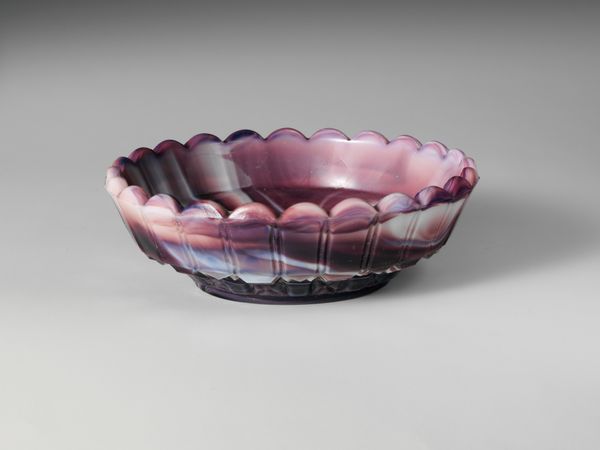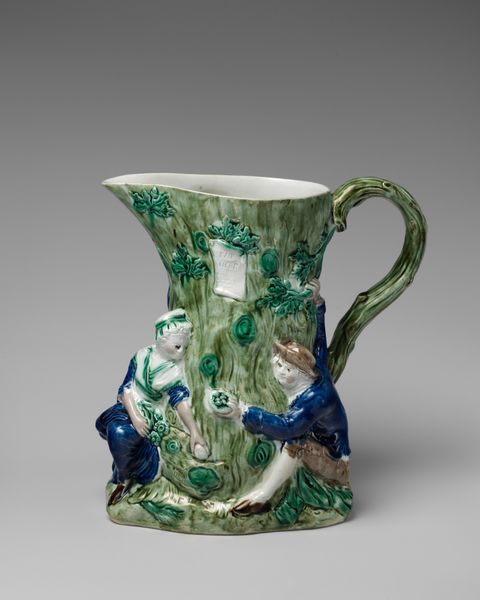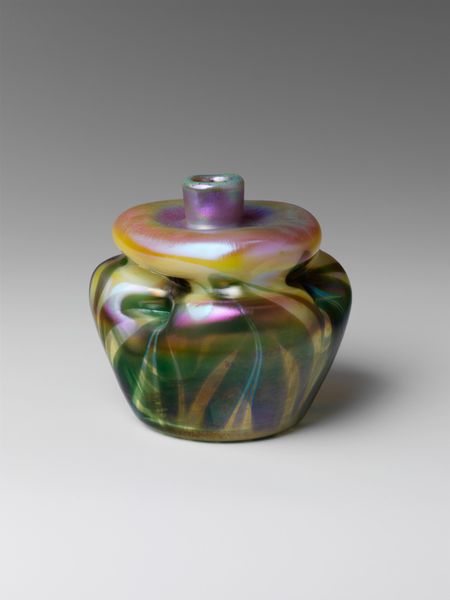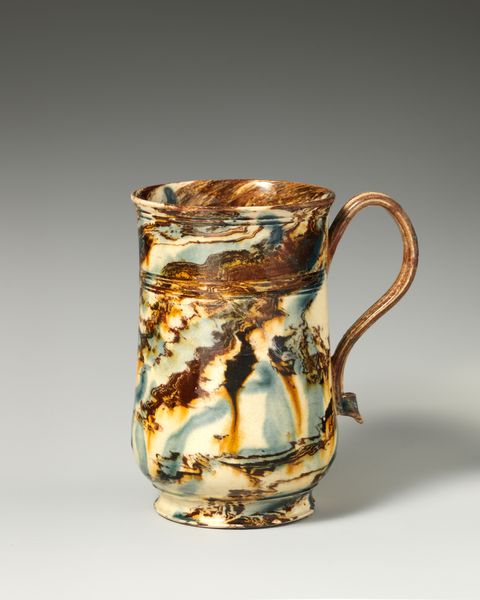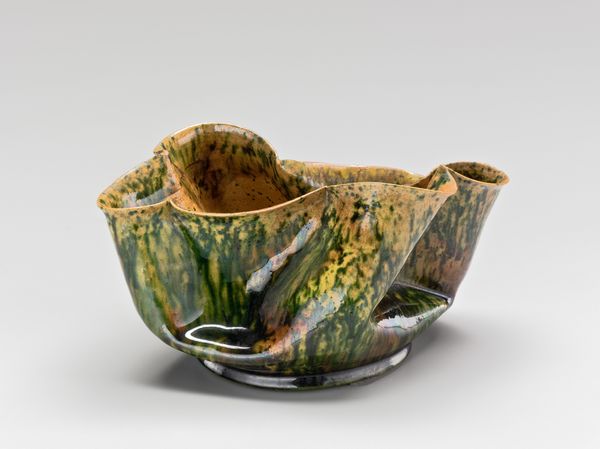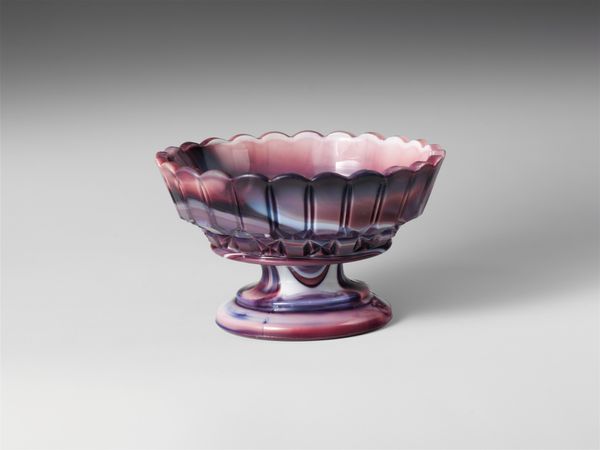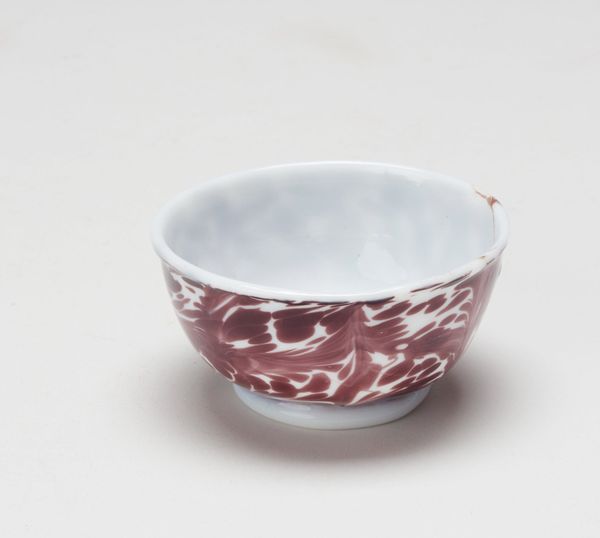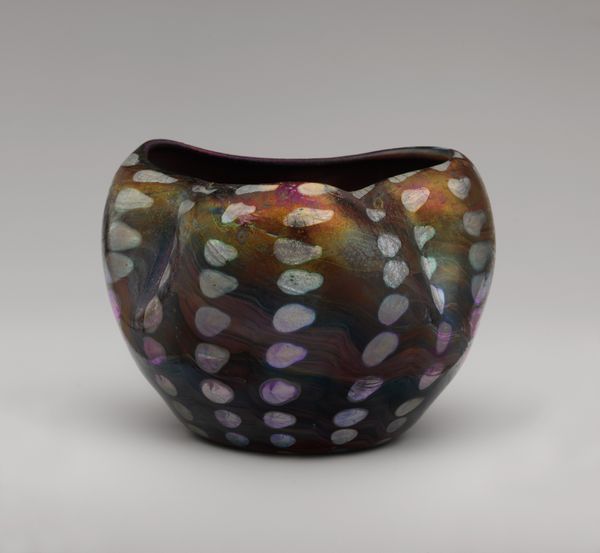
glass
#
glass
#
decorative-art
Dimensions: H. 2 in. (5.1 cm); Diam. 2 1/2 in. (6.4 cm)
Copyright: Public Domain
Curator: Standing before us is a “Cup,” created between 1870 and 1890 by Challinor, Taylor and Company. It’s part of the decorative arts collection at the Metropolitan Museum of Art, made of glass. Editor: My first impression? It reminds me of swirling galaxies or a psychedelic dream. The colors melting into one another… I feel like I could get lost in it. It has a soft, almost comforting vibe despite being glass. Curator: Absolutely. The late 19th century saw the rise of industrialization, which profoundly impacted design and production. Challinor, Taylor, and Company was part of this new wave, producing affordable decorative glass for a growing middle class. This cup reflects a Victorian taste for ornate objects and an interest in new technologies that enabled these swirling patterns. One may read into this decorative object a symbolic manifestation of emergent class status through accessible luxury. Editor: So, it's kind of like…aspirational glassware? Democratizing art through manufacturing? I wonder, did the people who bought these feel more connected to high society? Curator: Possibly. Glassware, and certainly "art glass", at that time was perceived as part of building taste and social identity for the increasingly urban Victorian class. Mass production created opportunities and new forms of cultural expression, but it also created hierarchies in how "good taste" was marketed and perceived, and through consumption trends, maintained power structures that excluded working-class people. Editor: That’s a weighty backstory for a little cup! Thinking about today, it is somewhat ironic, the piece evokes, to me, at least, a soothing and magical sensibility. Curator: These tensions and layers are part of the complexity when reflecting on any artwork and especially the decorative arts. I’m reminded how even seemingly simple objects carry complex social narratives. Editor: Makes you wonder about all the unspoken stories hiding in our teacups, doesn’t it? Art, at the end, is never really about just looking... but engaging with the objects and world surrounding them.
Comments
No comments
Be the first to comment and join the conversation on the ultimate creative platform.
